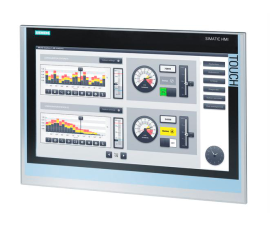
In today’s fast-paced industrial world, technology plays a significant role in increasing efficiency and safety. One of the key technological advancements in this space is the HMI screens. HMI, or Human Machine Interface, refers to a system that allows humans to interact with machines through a graphical interface. This technology is now at the heart of many industrial operations, from manufacturing plants to energy sectors, and even in consumer electronics. In this blog, we will explore what an HMI screen is, why it is important, and how it benefits various industries.
What is an HMI Screen?
An HMI screen is essentially a display or touchscreen interface that connects operators with machines or control systems. Through this interface, users can monitor and control the operation of equipment, view real-time data, and receive notifications or alerts. The screen can range from basic monochrome displays to advanced high-definition touchscreen interfaces.
HMI screens are found in many applications, including factory automation, food processing, water treatment plants, and even in household appliances. These screens offer a simple and intuitive way for operators to interact with complex systems, reducing the need for manual operations and paperwork.
How Does an HMI Screen Work?
The HMI screen works by communicating with programmable logic controllers (PLCs) or other control systems that manage the machine’s processes. These PLCs are connected to sensors and other equipment that measure and control various machine functions. The HMI screen retrieves the data from the PLC and displays it in an easy-to-understand format.
For instance, in a factory setting, an HMI screen might display information about the temperature, speed, or output of a production machine. If there’s an issue, the system can alert the operator through visual warnings or alarms on the screen, enabling quick responses to prevent potential damage or downtime.
Advantages of HMI Screens
Ease of Use: One of the most significant benefits of using an HMI screen is that it simplifies complex industrial processes. Operators do not need extensive technical knowledge to control machines, as the interface is designed to be user-friendly. Most systems are touchscreen-based, making navigation intuitive.
Real-Time Monitoring: HMI screens provide real-time data that helps operators track and monitor machine performance. The ability to see live data ensures that issues are detected early, minimizing the risk of malfunction or costly breakdowns.
Increased Productivity: With an HMI screen, industrial processes become more efficient. Operators can control machines more accurately, optimize performance, and make adjustments as needed without halting production. This improves overall productivity and reduces downtime.
Enhanced Safety: An HMI screen can also play a crucial role in maintaining safety standards in industrial settings. Alarms and alerts can notify operators of hazardous conditions, enabling them to take immediate action.
Data Logging and Analysis: Another key benefit of an HMI screen is its ability to log data over time. Operators can track machine performance, identify patterns, and make data-driven decisions. The data collected can also be used for preventive maintenance, helping to avoid breakdowns before they happen.
Customization: HMI screens are highly customizable, allowing companies to tailor the interface to meet specific operational needs. Whether it’s adding new features, adjusting screen layouts, or configuring different access levels for different users, an HMI screen can be adapted to fit any industrial environment.
Applications of HMI Screens
1. Manufacturing
In manufacturing plants, HMI screens are essential for controlling machinery and monitoring production lines. Whether it’s in automotive assembly or electronics manufacturing, these screens provide operators with the information they need to ensure smooth production. They can adjust settings, start or stop machines, and monitor system health—all from the HMI interface.
2. Energy Sector
The energy sector also heavily relies on HMI screens for monitoring and controlling power generation and distribution systems. In power plants, HMI screens enable operators to track critical parameters like voltage, temperature, and pressure. They can quickly detect issues and ensure that systems run at optimal levels.
3. Water Treatment Plants
In water treatment facilities, HMI screens are used to monitor filtration systems, chemical dosing, and water levels. The interface helps operators ensure that water is treated according to safety standards. By providing real-time data on water quality and system performance, HMI screens play a vital role in ensuring public health.
4. Transportation
HMI screens are also used in transportation, particularly in vehicles like trains, airplanes, and ships. They provide operators and pilots with crucial information about the vehicle’s status and controls. Whether it’s monitoring fuel levels, engine performance, or navigation systems, HMI screens improve the safety and efficiency of transportation.
Conclusion
The HMI screen is a vital tool in modern industrial automation, providing an easy-to-use interface that connects operators with complex machines and control systems. Its ability to display real-time data, enhance safety, and increase productivity makes it an essential part of many industries. As technology advances, the capabilities of HMI screens will only continue to grow, bringing even more efficiency and innovation to industrial processes.


